Explore the Hagia Sophia
Hagia Sophia stands as Istanbul’s most iconic symbol of cultural and religious transformation. Originally constructed in 537 AD under the reign of Emperor Justinian I, this architectural marvel has served as a Byzantine cathedral, an imperial mosque, and now a functioning mosque once again—each era leaving its mark on the structure’s unique character.
Inside, visitors are captivated by the massive dome, ancient mosaics, towering columns, and the subtle blend of Christian and Islamic artistry that fills the vast, echoing space. It’s a place where empires met, faiths intertwined, and history was made—over and over again.
Whether you're marveling at the golden ceilings or standing beneath the calligraphic roundels, a visit here is both spiritual and unforgettable. To make the most of your experience, booking your Hagia Sophia Istanbul tickets in advance ensures smooth entry and the chance to explore this UNESCO-listed site at your own pace.
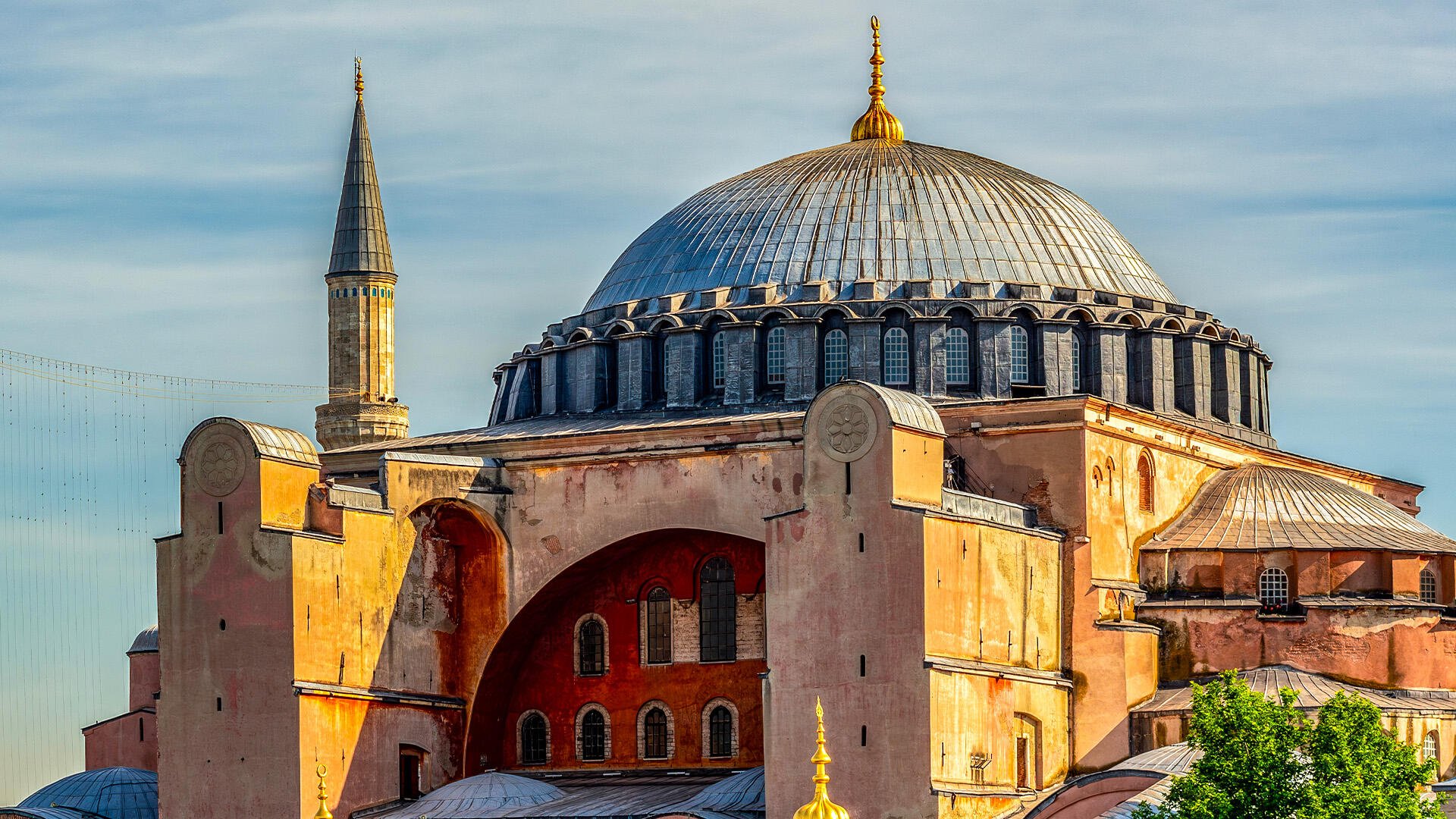
Hagia Sophia History
The construction of Hagia Sophia history began in 537 AD, commissioned by the Byzantine Emperor Justinian I. The structure is regarded as one of the greatest achievements of Byzantine architecture. For centuries, it served as the largest church in the capital of the Byzantine Empire, Constantinople.
After the conquest of Constantinople in 1453 by the Ottoman Empire, Hagia Sophia was converted into a mosque. During the Ottoman period, several additions were made to the structure, including minarets and large chandeliers.
In the Republican era, in 1935, Hagia Sophia was officially transformed into a museum, welcoming the public for the first time. Today, it stands as both a historical and cultural symbol, attracting millions of visitors every year.
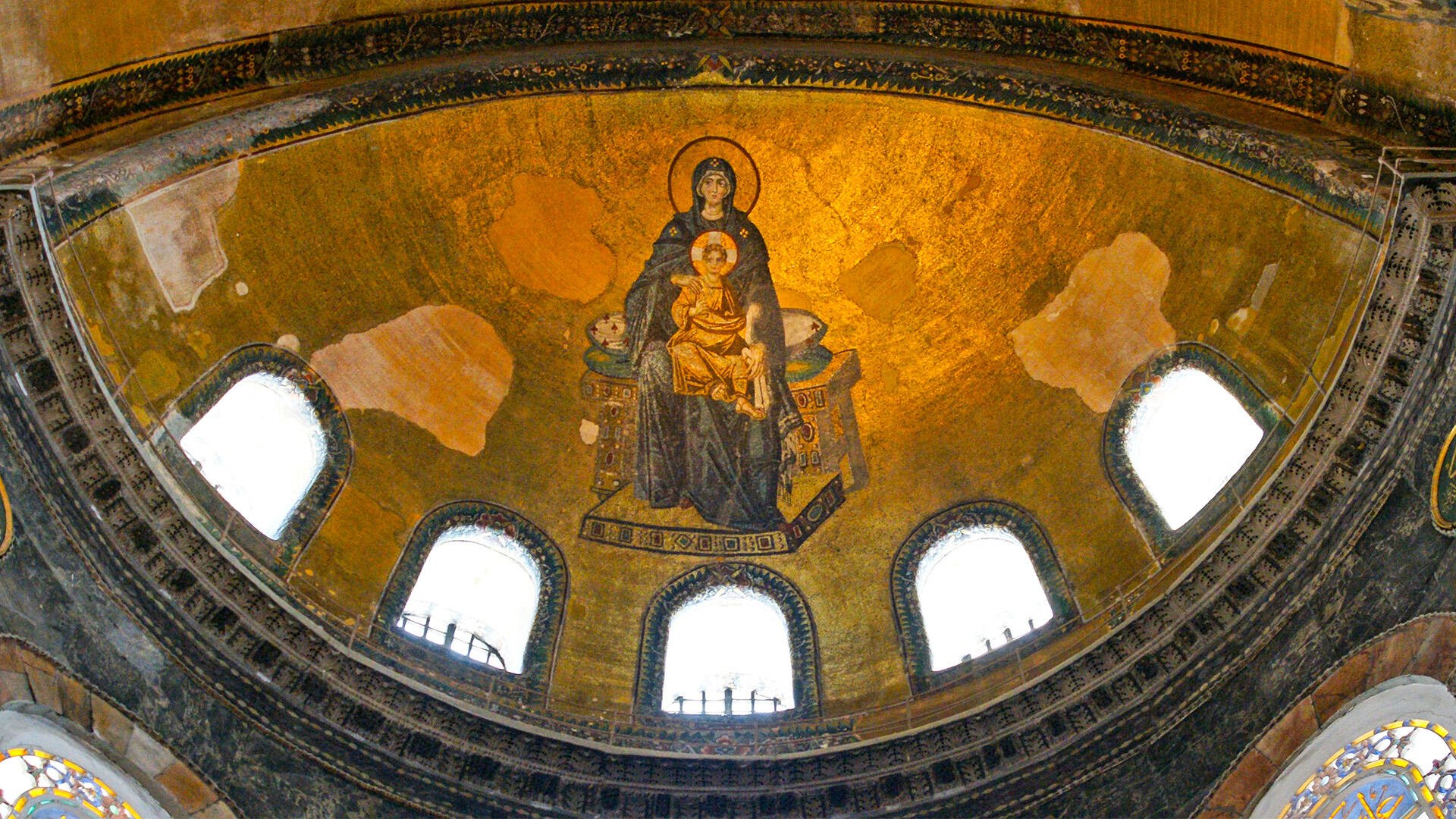
Hagia Sophia Architecture
The Hagia Sophia architecture is a masterpiece of Byzantine design, renowned for its vast dome, which seems to float above the central nave. The dome is supported by pendentives, creating a sense of weightlessness. This architectural feat was unprecedented in its time, pushing the boundaries of construction in the 6th century.
The interior of Hagia Sophia is adorned with intricate mosaics, calligraphy, and marble pillars, showcasing a blend of Byzantine and Ottoman artistic influences. The use of natural light through the windows in the dome adds to the grandeur, casting an ethereal glow over the space.
The structure’s design was revolutionary, incorporating vaulted ceilings, arches, and nave that allowed for the creation of one of the largest interiors of any building in the world at the time. The Hagia Sophia architecture continues to inspire awe and is considered one of the greatest achievements in architectural history.
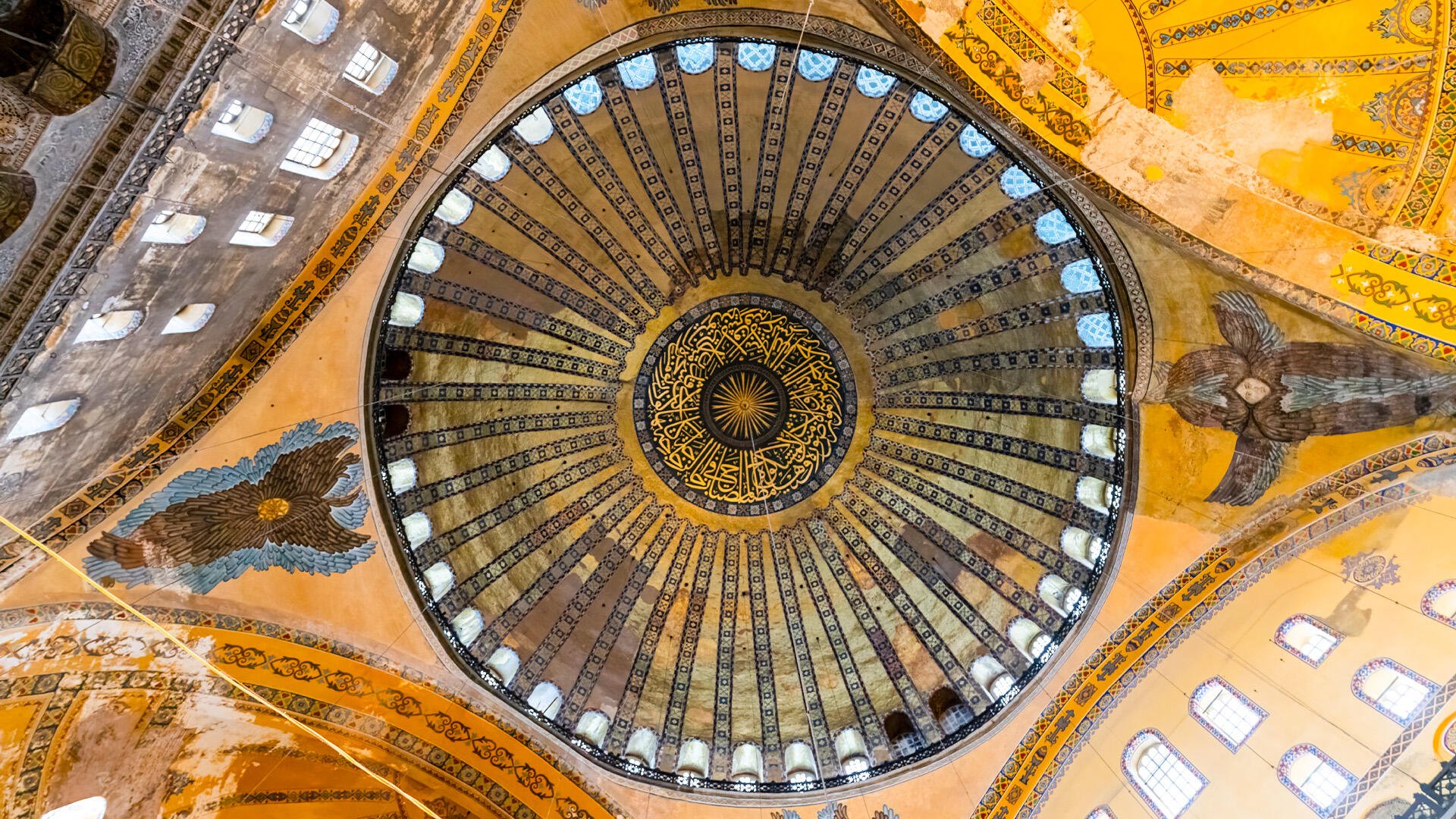
Why Visit Hagia Sophia?
Historical Significance: The Hagia Sophia Mosque has served as a cathedral, mosque, and museum throughout its history. It offers a unique opportunity to explore its transformation and the rich cultural and religious heritage it holds.
Architectural Beauty: The Hagia Sophia Mosque is famous for its stunning dome and blend of Byzantine and Ottoman architecture. Its intricate mosaics, calligraphy, and marble pillars reflect the craftsmanship of two great empires.
Cultural & Religious Value: As a symbol of both Byzantine and Ottoman culture, Hagia Sophia Mosque is a remarkable fusion of Christian and Islamic art and history, making it a must-visit for history enthusiasts.
Unique Experience: Visiting Hagia Sophia Mosque offers a one-of-a-kind experience, where you can immerse yourself in centuries of history and spirituality, all within a single visit.
Things to Know Before You Book Hagia Sophia Tickets
Ticket Types Explained: When purchasing your Hagia Sophia tickets, a standard ticket provides access to the main hall and galleries. For extra features, consider audio guide tickets or combo tickets that include nearby attractions like the Basilica Cistern and Topkapi Palace for added value.
Online vs. Onsite: Why Book Hagia Sophia Tickets Online? Booking online allows you to skip long lines, choose a time slot, and access benefits like audio guides. These perks are not available when buying onsite.
Skip-the-Line Options:
- Entry tickets with audio guide for priority access.
- Combo tickets with other major attractions for fast-track entry.
- Guided tours for deeper insights, skipping the queues.
Tips for Avoiding Queues
- Book Hagia Sophia tickets online to skip long lines.
- Arrive early around 09:00 AM when crowds are smallest.
- Avoid weekends and midday hours (12:00 PM – 2:00 PM).
- Security checks are mandatory, so expect a brief wait.
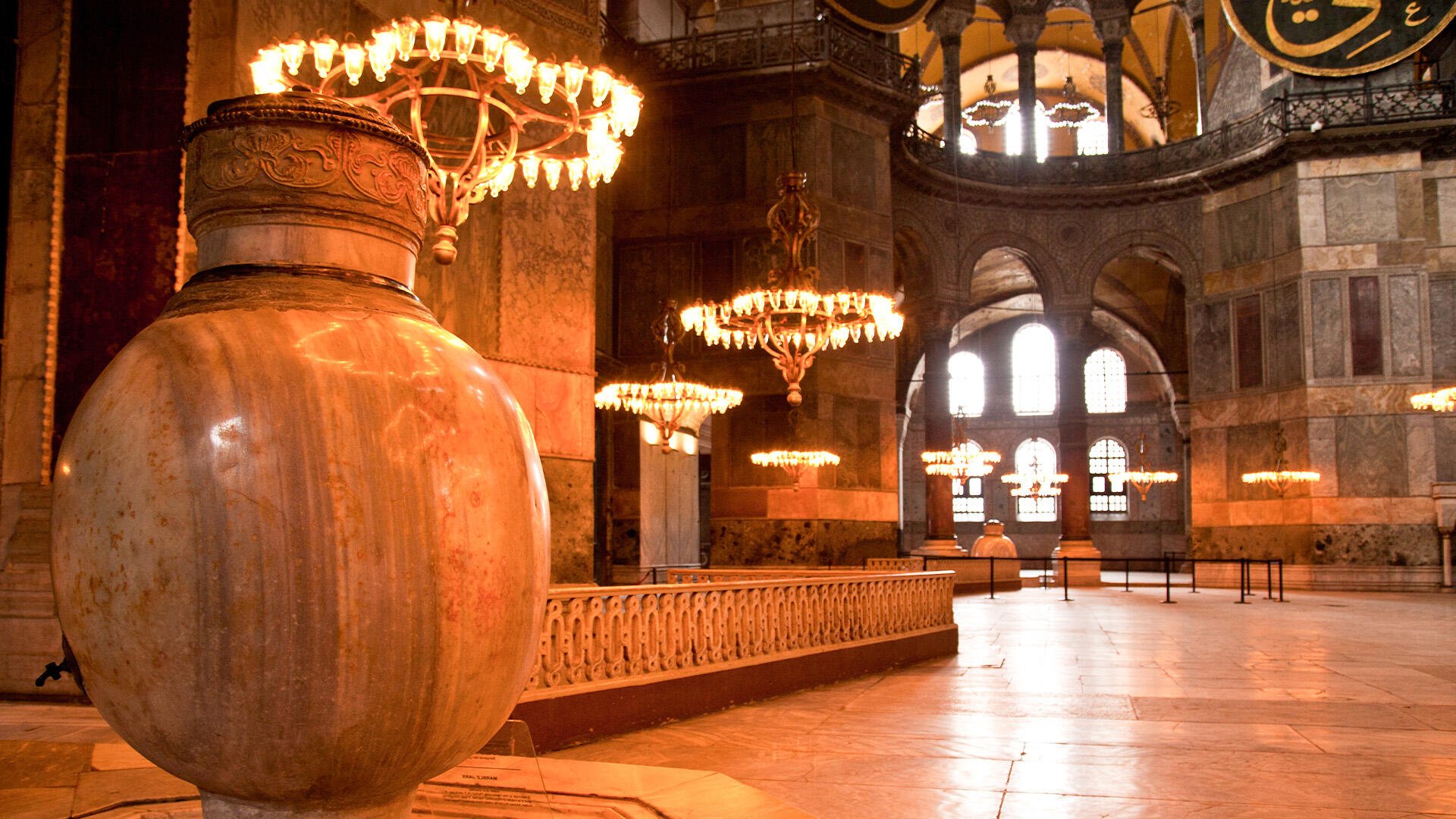
Compare Your Hagia Sophia Tours and Tickets Options
| Ticket Type | What’s Included | Skip-the-Line | Price | More Info & Booking |
|---|---|---|---|---|
| Hagia Sophia Skip the Line Ticket with Audio Guide and Augmented Reality | Skip-the-line access, audio guide, augmented reality experience | Yes | €32.50 | Book Now |
| Treasures of Istanbul: Hagia Sophia Tour | Expert guide, tour of Hagia Sophia | Yes | €38.00 | Book Now |
| Blue Mosque Tour & Hagia Sophia Tickets | Guided tour of Blue Mosque, flexible Hagia Sophia entry | Yes | €45.00 | Book Now |
| Hagia Sophia & Basilica Cistern Tickets | Skip-the-line access, audio guide for Hagia Sophia & Basilica Cistern | Yes | €63.00 | Book Now |
| Discover the Icons - Hagia Sophia, Topkapi Palace, and Basilica Cistern | Skip-the-line access to Hagia Sophia, Topkapi Palace, and Basilica Cistern | Yes | €123.00 | Book Now |
Which Hagia Sophia Ticket is Best for You?
When choosing Hagia Sophia tickets, it's important to compare your options based on the type of experience you're looking for. Here’s a breakdown of some of the most popular ticket types:
- Skip-the-Line Tickets: For visitors who want to avoid long waits, skip-the-line tickets are perfect. These tickets allow priority entry and often come with added benefits like audio guides, offering a more efficient and informative visit.
- Combo Tickets: For those interested in exploring more of Istanbul, combo tickets are a great value. These tickets include entry to Hagia Sophia along with nearby attractions such as the Basilica Cistern or Topkapi Palace, giving you more for your money.
When purchasing Hagia Sophia tickets, consider the length of your visit and the experience you want to have. Skip-the-line options are especially popular for those short on time, while combo tickets are great for those who want to explore more of the city's top attractions.
Hagia Sophia Entrance Fee and Ticket Price
The hagia sophia entrance fee for all visitors includes skip-the-ticket-line access, making your visit more convenient and time-efficient. The hagia sophia ticket price typically ranges from €32.50 for a skip-the-ticket-line ticket with an audio guide and augmented reality experience to €123 for combo tickets that include entry to Hagia Sophia, Topkapi Palace, and the Basilica Cistern.
Certain days may offer free entry, such as special national holidays or events, but it’s best to check in advance.
Since all tickets offer skip-the-ticket-line benefits, booking online in advance is recommended for a seamless experience, as it includes extras like audio guides or combo ticket deals.
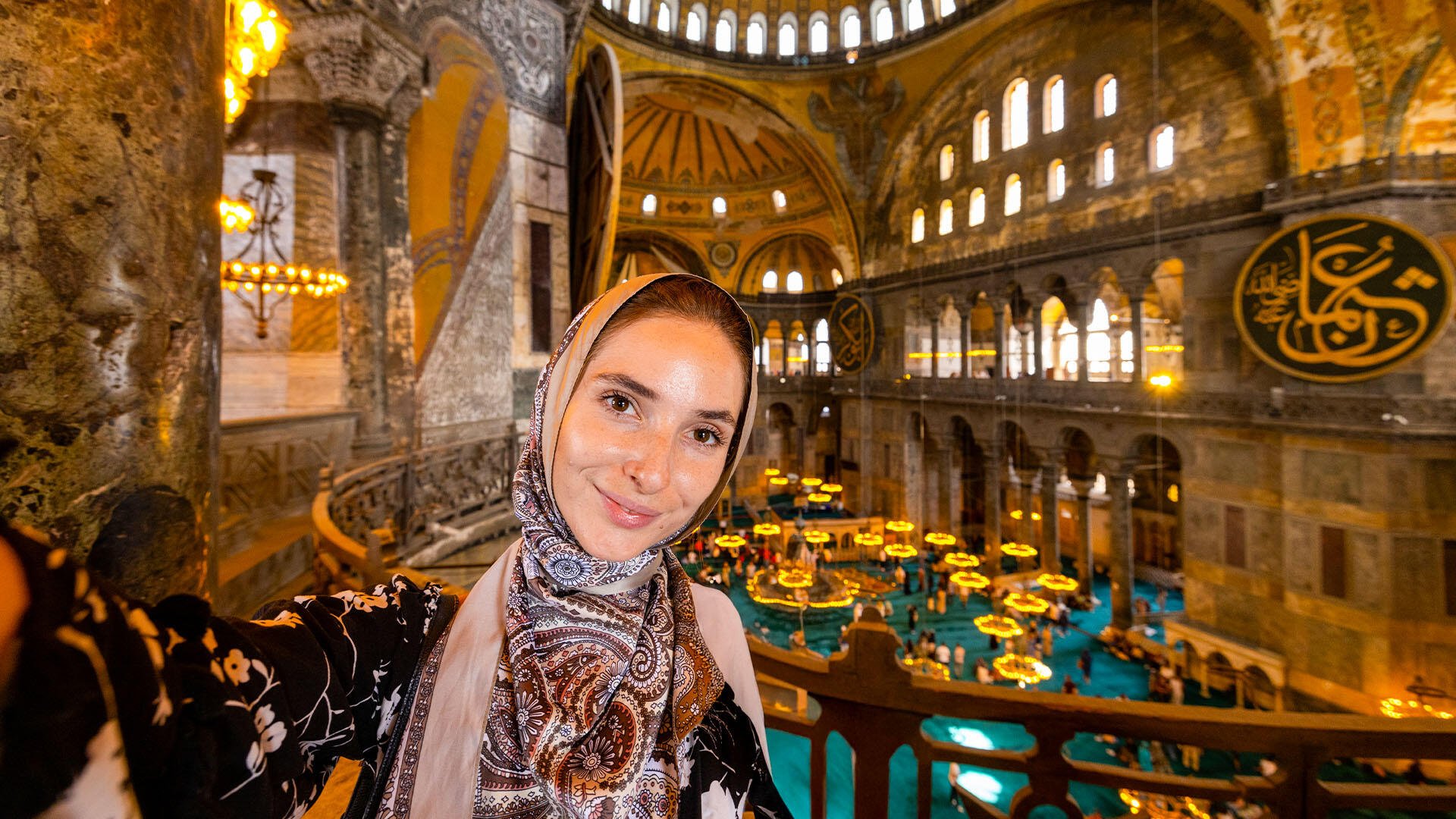
Hagia Sophia Hours
Daily Schedule: Hagia Sophia is open 7 days a week, 24 hours a day, offering flexible access to visitors at any time.
Hagia Sophia Hours: With Hagia Sophia hours being constant, it’s important to check for any special occasions or public holidays that might result in adjusted entry or events. Booking hagia sophia tickets in advance is recommended during busy times to ensure entry.
Closed Days: Hagia Sophia is open every day of the week, 24 hours a day, with no closures on specific days.
What's Inside Hagia Sophia Museum?
The Hagia Sophia museum offers a captivating journey through Istanbul's rich history, showcasing artifacts from its diverse past.
Permanent Exhibits
The museum's permanent collection is thoughtfully divided into four thematic sections:
- The Cathedral: Displays relics from the Byzantine era, including the apse mosaic of the Virgin Mary and Child, and the iconostasis.
- The Mosque: Features items from the Ottoman period, such as the mihrab and minbar, reflecting the building's transformation into a mosque.
- The Museum: Highlights artifacts from the time when Hagia Sophia served as a museum, showcasing Byzantine capitals and columns.
- The Mosque Again: Presents items from the period following the 2020 reconversion of Hagia Sophia into a mosque, including the newly crafted mihrab and minbar.
These exhibits provide visitors with a comprehensive understanding of Hagia Sophia's multifaceted history.
Hagia Sophia Highlights
• Exterior Architecture: The exterior architecture of Hagia Sophia is an awe-inspiring blend of Byzantine and Ottoman styles. The grand entrance, adorned with intricate stonework, leads to a massive structure that once dominated the skyline of Constantinople. The iconic minarets, added during the Ottoman period, rise majestically on all sides, symbolizing the building’s transformation from a church to a mosque.
• Hagia Sophia Mosaics: The Hagia Sophia mosaics are a testament to the brilliance of Byzantine art. The most famous mosaics include the Virgin and Child in the apse and the Emperor Justinian and Empress Theodora images. These mosaics, often adorned with gold leaf, date back to the 9th to 12th centuries and offer a glimpse into the Byzantine devotion and imperial power.
• Hagia Sophia Dome: The Hagia Sophia dome is one of the most impressive architectural feats in the world. At 31 meters in diameter, the dome creates a sense of floating above the central nave, thanks to the innovative use of pendentives. The dome’s architecture symbolizes the heavens and is a defining feature of Hagia Sophia.
• Calligraphy Medallions: The calligraphy medallions inside Hagia Sophia are an essential part of its Islamic identity. Large, circular inscriptions featuring the names of Allah, Muhammad, and the four caliphs, are prominently displayed in gold on the walls, a symbol of the building’s transformation into a mosque during the Ottoman era.
• Mihrab: The mihrab in Hagia Sophia is one of the key features of its mosque transformation. Positioned on the qibla wall, it indicates the direction of Mecca. The mihrab’s intricate details showcase Islamic craftsmanship, adding to the grandeur of the space while blending seamlessly with the Byzantine elements.
• Library of Sultan Mahmud I: The Library of Sultan Mahmud I is an exceptional feature of Hagia Sophia, displaying Ottoman-era manuscripts and texts. Located in a quiet area, this library houses priceless historical works, reflecting the intellectual legacy and patronage of Sultan Mahmud I.
Plan Your Visit to Hagia Sophia
• Timings: Hagia Sophia is open 7 days a week, 24 hours a day. To avoid crowds, it's recommended to visit early in the morning or later in the evening. A typical visit takes about 1 to 2 hours, but if you want to explore the mosaics and other key features in detail, plan for a longer visit.
• Getting to Hagia Sophia Mosque: The Hagia Sophia Mosque is located in the heart of Istanbul's historic Sultanahmet district, easily accessible by public transport. You can reach it via tram (T1 line) by getting off at the Sultanahmet or Gülhane stops. Buses and taxis also serve the area. If you’re using MegaPass, you can also enjoy additional options such as guided tours and transfers.
• Facilities: Inside Hagia Sophia, you’ll find public restrooms and a few small cafes. ATMs are available in the surrounding Sultanahmet area. Information desks and souvenir shops are scattered around the mosque, offering useful visitor information and mementos.
• Visitor Tips:
- Do book your tickets online through MegaPass to avoid queues and save time.
- Do wear comfortable shoes, as there is quite a bit of walking, including uneven surfaces.
- Don’t touch the mosaics or enter restricted areas.
- Don’t bring large bags, tripods, or any items that might cause delays during security checks.
- Respect the space, especially during prayer times when parts of the mosque may be closed to tourists.
• Eat: Nearby, you'll find plenty of traditional Turkish restaurants and cafes offering local dishes. After your visit, you can enjoy a meal at one of the many eateries in Sultanahmet, with options ranging from casual street food to fine dining.
• Stay: For convenience, staying in Sultanahmet is highly recommended. This district is home to many hotels and guesthouses, ranging from luxury boutique hotels to budget-friendly options. Booking early ensures a great spot near Hagia Sophia and other attractions, saving you both time and money.
How to Get to Hagia Sophia Mosque
Public Transportation Options
- By Tram: The nearest tram stations to Hagia Sophia Mosque are Sultanahmet and Gülhane, both just a 5-10 minute walk away.
- From Taksim: Take the F1 funicular to Kabataş, then transfer to tram T1 and ride 7 stops to Sultanahmet Station. From there, it's just a short walk to Hagia Sophia Mosque.
- By Bus: The closest bus stop is Sarayburnu Station, which is about a 10-minute walk from Hagia Sophia Mosque.
- By Metro (from Taksim): Take the M2 metro to Vezneciler Station, transfer to tram T1 at Laleli-Üniversite, and ride 3 stops to Sultanahmet. Then walk 5 minutes to Hagia Sophia Mosque.
Private Transportation (Taxi, Transfer)
Taxis and private transfers are widely available in Istanbul and can take you directly to the entrance of Hagia Sophia Mosque. This option is convenient for those who prefer direct access or have limited time.
Parking Information
There is limited parking near Hagia Sophia Mosque, with mostly paid public parking lots in the Sultanahmet area. Visitors arriving by car should plan accordingly, as the area is historic with narrow streets and limited space for vehicles.
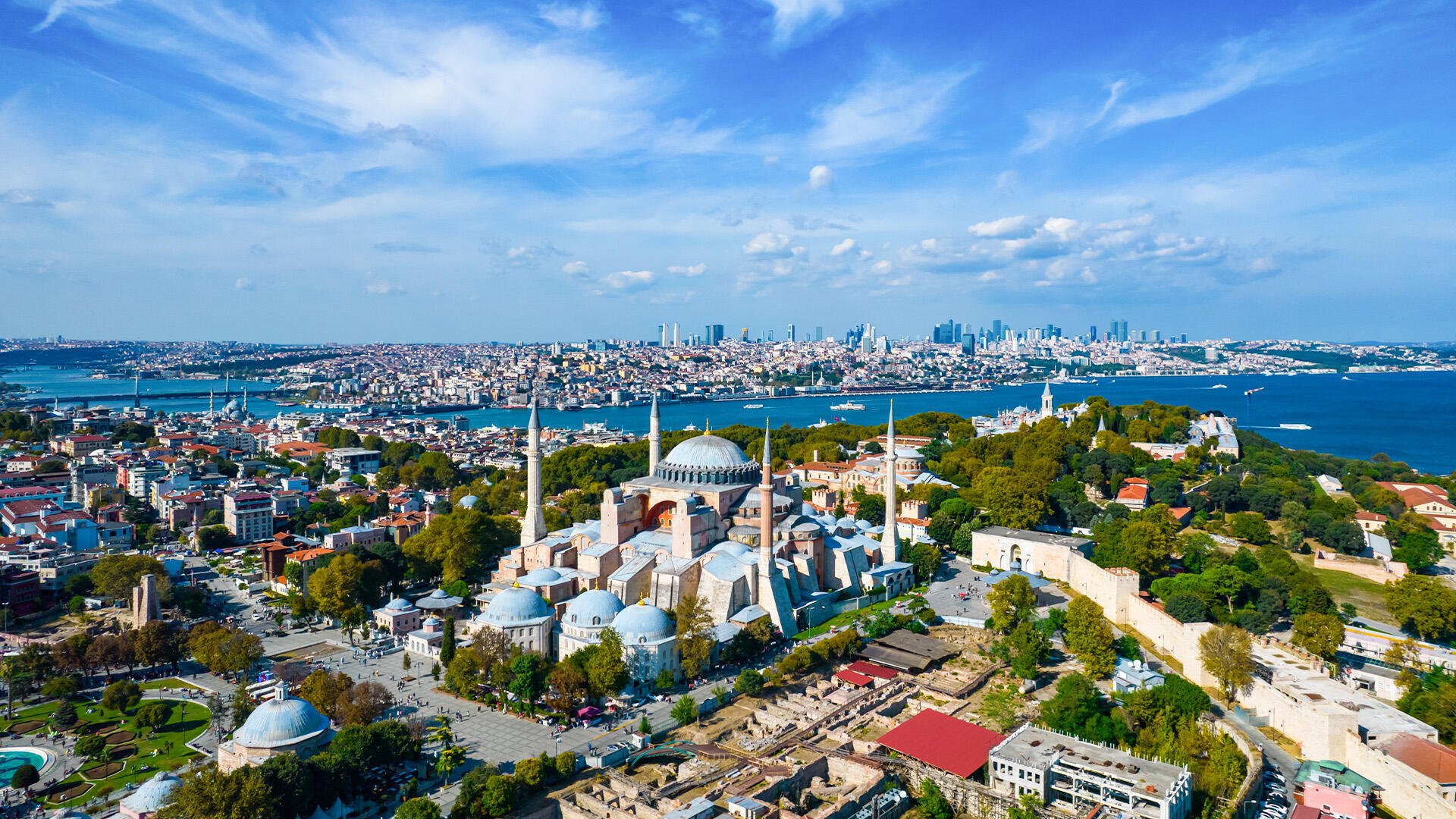
What to Do in Hagia Sophia?
• Explore the History: As one of Istanbul’s most iconic landmarks, Hagia Sophia offers a rich historical journey. Start by exploring the Byzantine mosaics and the Ottoman calligraphy medallions that adorn the walls. These masterpieces tell the story of Hagia Sophia's transformation from a Christian church to an Ottoman mosque, and now a museum.
• Admire the Dome: The Hagia Sophia dome is a stunning architectural achievement. As you enter, take time to look up and appreciate the engineering marvel of its vast dome, which appears to float above the central nave, supported by innovative pendentives.
• Visit the Mihrab: The mihrab, located on the qibla wall, is one of the key features of the mosque. It indicates the direction of Mecca and is beautifully decorated, showcasing the blend of Byzantine and Ottoman design elements.
• Discover the Library of Sultan Mahmud I: While in Hagia Sophia, don't miss the Library of Sultan Mahmud I. This Ottoman-era library holds important manuscripts and historical texts, offering a glimpse into the intellectual legacy of the era.
• Attend a Special Event: Check the schedule for any special events or exhibitions taking place inside Hagia Sophia. On special occasions, the mosque may host events or cultural programs that provide a deeper insight into its rich heritage.
• Take Photos: Don’t forget to capture the beauty of Hagia Sophia. From the mosaics to the grand dome, the building offers countless photo opportunities that will help you remember your visit for years to come.
• Reflect and Enjoy the Spiritual Atmosphere: Whether you're a visitor with religious significance or simply an admirer of the structure, take time to sit quietly and absorb the spiritual atmosphere that fills Hagia Sophia. It is a peaceful retreat in the heart of Istanbul, offering a unique blend of history, art, and culture.
Things to Know Before Visiting Hagia Sophia
• Guided/Audio Tours: Enhance your visit to Hagia Sophia with a historian-led guided tour for in-depth insights into its history, or opt for a self-guided audio tour for a more independent exploration. Booking official tours in advance is highly recommended for a smoother experience.
• Unofficial Guides: Be cautious of unofficial guides near Hagia Sophia. Always choose tours from authorized operators. Official guides should display a badge or identification.
• Photography: Photography is allowed in most parts of Hagia Sophia, but certain sections may have restrictions, especially during prayer times or special events. Always respect the space and rules.
• Shoes: Since Hagia Sophia is a large and expansive site, wear comfortable shoes for walking, especially when exploring its multiple levels and intricate details.
• Dress Code: While there is no formal dress code to visit Hagia Sophia, visitors are encouraged to dress modestly, especially considering it’s a place of worship. Covering shoulders and knees is recommended.
• Admission Fees: Make sure to check current hagia sophia ticket prices before your visit. Tickets can be purchased online for skip-the-line access, which helps you save time.
• Free Admission: Hagia Sophia offers free entry for certain groups, such as children under 6 and visitors with disabilities. Make sure to carry valid identification to qualify for any discounts or free access.
• Early Arrival & Security: To avoid the crowds and allow ample time for security checks, it’s best to arrive early in the day. Hagia Sophia is open 24 hours, but peak visiting hours can get busy, so planning ahead is important.
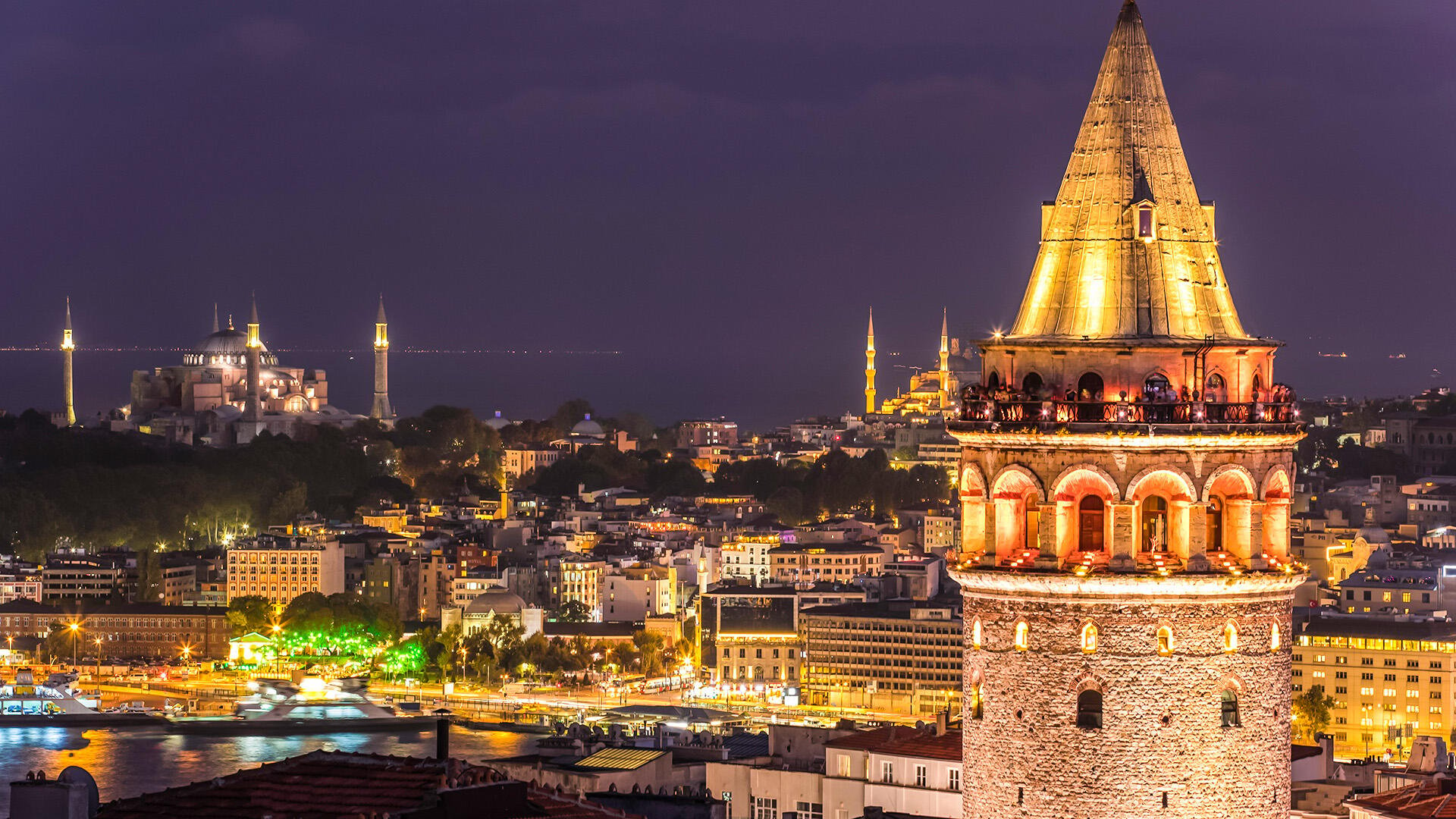
Do I Need a Guided Tour to Visit Hagia Sophia?
While a guided tour is not required to visit Hagia Sophia, it can significantly enhance your experience. Here’s why:
• In-Depth Historical Insights: A guided tour led by a professional historian offers deep insights into the history, architecture, and significance of Hagia Sophia. It’s an excellent option if you want to fully understand the context of its transformation from a Byzantine cathedral to an Ottoman mosque and now a museum.
• Self-Guided Audio Tours: If you prefer to explore at your own pace, a self-guided audio tour can be a great option. This allows you to learn about the mosaics, dome, and other key features of Hagia Sophia without the need for a guide. Many visitors find this a flexible option to fit their schedule.
• Exploring Independently: You don’t need a guide to enjoy Hagia Sophia. The site is well signposted, and there’s plenty of information available in the form of plaques and interactive displays. If you're comfortable with self-exploration, a guided tour may not be necessary.
• Benefits of a Guided Tour: If you’re visiting during peak times or want a more personalized experience, a guided tour ensures you skip the lines and gain a deeper understanding of the history and art inside Hagia Sophia. It’s a great way to make the most of your visit.
Average Time Spent in Hagia Sophia
The amount of time you spend in Hagia Sophia largely depends on your interest in exploring its rich history and intricate details. On average, visitors spend between 1 to 2 hours inside Hagia Sophia. Here’s a breakdown:
• Quick Visit: If you're just stopping by for a quick look at the main hall and key features such as the mosaics and the dome, a visit can take around 45 minutes to an hour.
• In-Depth Exploration: For those who want to explore the history, architecture, and artistry in detail, including the Hagia Sophia mosaics, calligraphy medallions, and other significant features, 1.5 to 2 hours is recommended.
• Guided Tour: If you're taking a guided tour, the experience will likely take around 2 hours, as the guide will provide in-depth explanations of the Hagia Sophia Museum's history, architecture, and transformation over the centuries.
• Extra Time: If you're attending special events or exhibitions, you may want to allocate extra time, depending on the schedule and your interest in the exhibits.
Whether you're on a tight schedule or have more time to explore, Hagia Sophia offers a fulfilling experience for all visitors.
Explore Beyond Hagia Sophia
While Hagia Sophia is a must-see, Istanbul offers many other unforgettable attractions. Enhance your visit by exploring these iconic sites — all easily accessible and available through MegaPass:
- Topkapi Palace Tickets — Discover the heart of the Ottoman Empire, where sultans once ruled. Explore grand courtyards, royal rooms, and important historical collections.
- Blue Mosque Guided Tours — Visit one of Istanbul’s most iconic active mosques, featuring stunning architecture, rich history, and spiritual significance, with a guide to help you understand its importance.
- Basilica Cistern Tickets — Dive into the fascinating underground world of the Basilica Cistern, showcasing Byzantine engineering and towering columns.
- Dolmabahce Palace Tickets — Step inside the luxurious Dolmabahce Palace, where the opulence of the late Ottoman Empire is still visible in its grand architecture and gardens.
- Bosphorus Cruise Tickets — Take a scenic Bosphorus Cruise to see the stunning views of Istanbul from the water, including landmarks like Topkapi Palace and Dolmabahce Palace.

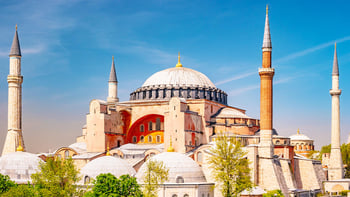








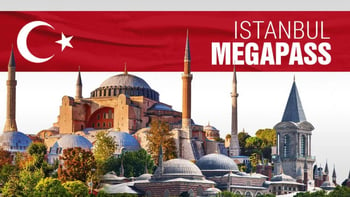
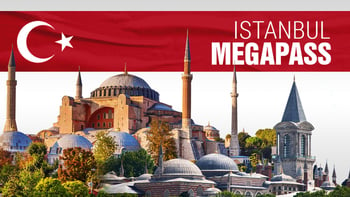
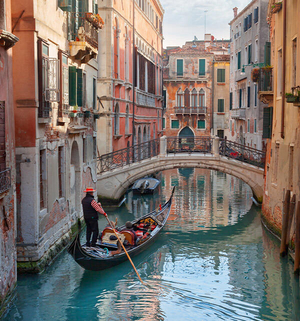
Hagia Sophia Tickets and Tours 리뷰
All of our tour guides were accommodating phenomenal.I have never had hospitality as we had in.Istanbul. Saved lots of money and got to enjoy all the best
Ali, our Istanbul guide for the Blue Mosque, Hagia Sophia, and Basilica Cisterna, was fantastic! His academic knowledge of the sites, the history of the Byzantine, Roman, Ottoman Empires, and recent history really made the tour valuable. It was expensive at over $100/Eur88 per person, but it was worthwhile in being able to go to fast track lines with entry fees already paid. His knowledge was worth the extra cost, going beyond the standard audio guide you could pick up at any site. Ali kept the group engaged AND together, even as some guests split off and returned later. He did let us know about how long we would have in each site, the approximate distances involved, the protocols to follow in the mosques, and so on.